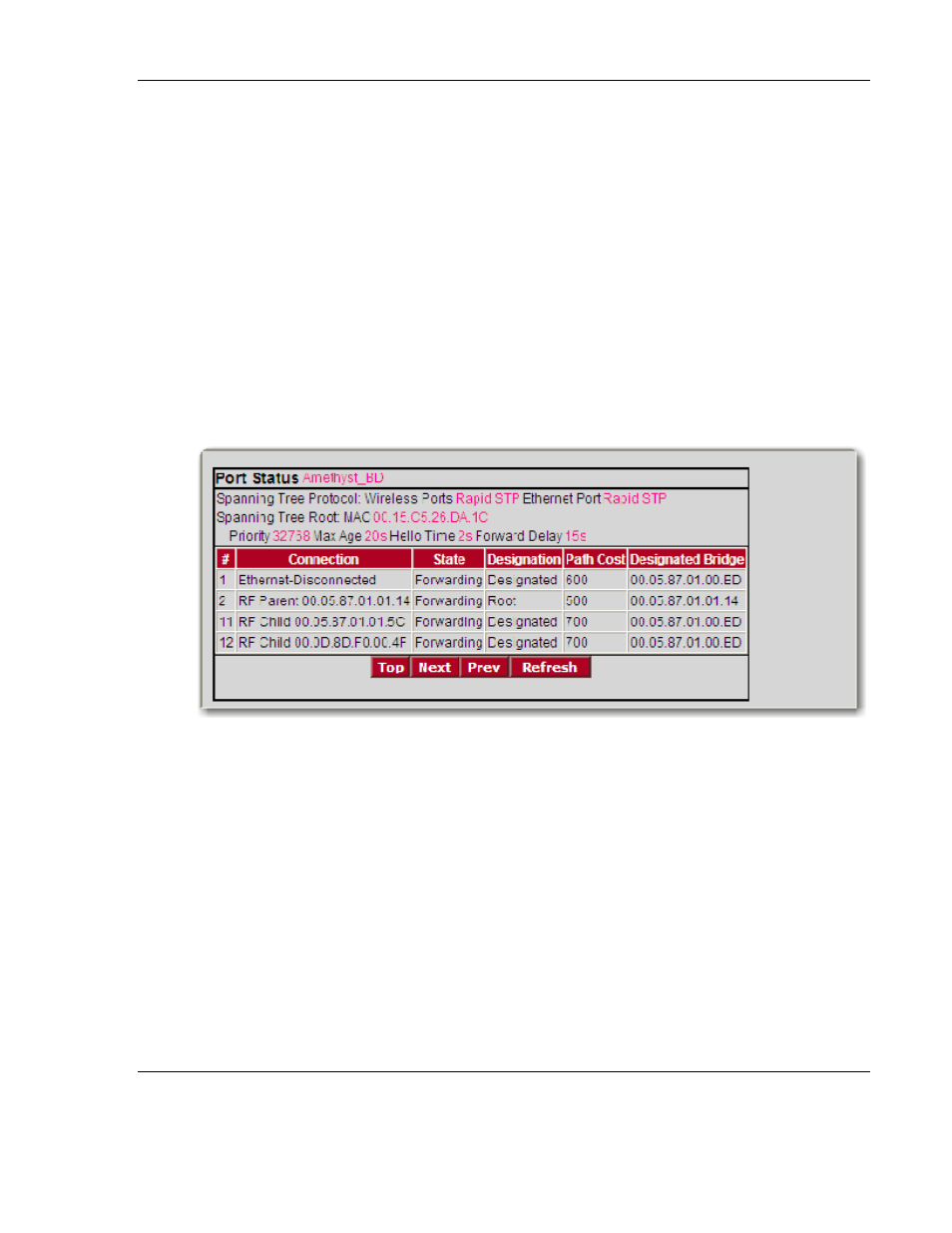ProSoft Technology RLX2-IHNF-WC User Manual
Page 93

RLX2 Industrial Hotspot Series
ProSoft Technology, Inc.
Page 93 of 212
June 15, 2015
standard, IH radios work in conjunction with wired Ethernet switches to form a
redundant network.
Each RSTP device (RLX2 radio or Ethernet switch) communicates with other RSTP
devices in the network via packets called Bridge Protocol Data Units (BPDUs). BPDUs
are sent out each of the devices ports. In a wired switch, this would be from each of the
Ethernet ports. In an RLX2 Radio, in addition to the Ethernet port, each wireless link is
considered a port. These BPDUs are the communications means to allow each RSTP
device in the network to make sure that the proper connections still exist.
In the following illustration, the RLX2 Radio has 4 RSTP "ports":
Ethernet port (1)
A port for its parent connection (2)
A port for each of its two child connections (11 and 12).
BPDUs are sent out the port at a rate called the "Hello Time". The accepted standard
value for this is 2 seconds. If a radio (or any other RSTP device) does not get a BPDU for
2 Hello Times, it assumes the RSTP device that had been there is no longer available. It
can then open an alternate path if one is available. This process is much like the STP
process. If other devices on the network are not operating in rapid spanning tree mode,
the radio will revert to normal spanning tree operation on a per-port basis.
RSTP provides a performance enhancement over STP operation. By comparison, the
radio using the STP algorithm would revert its port to the listening state, and then to the
learning state, before returning to the forwarding state. Each of these states takes at
least 15 seconds, during which the STP devices are listening for BPDUs to re-negotiate
the network topology. The advantage of using the RSTP functionality is that is uses
